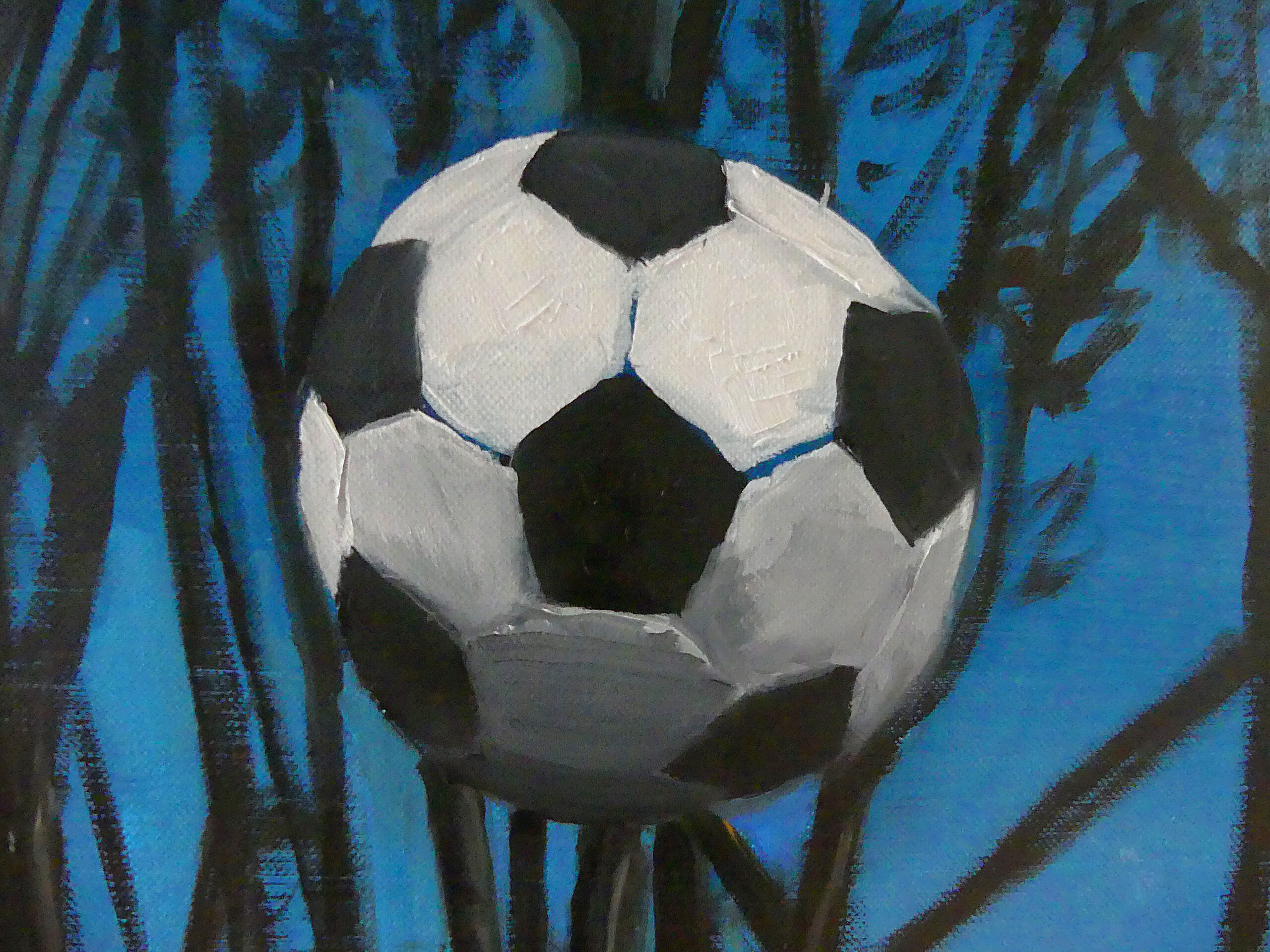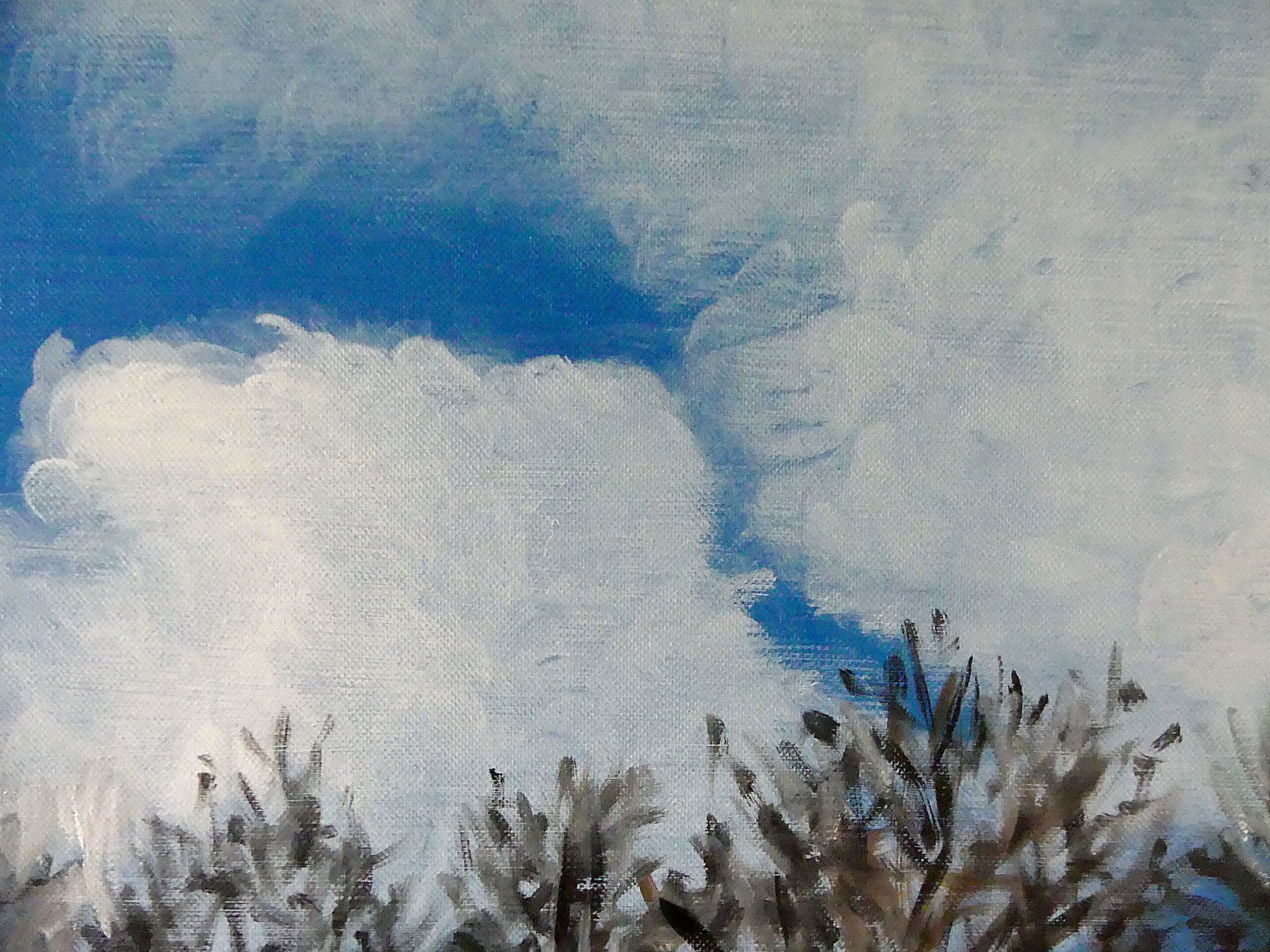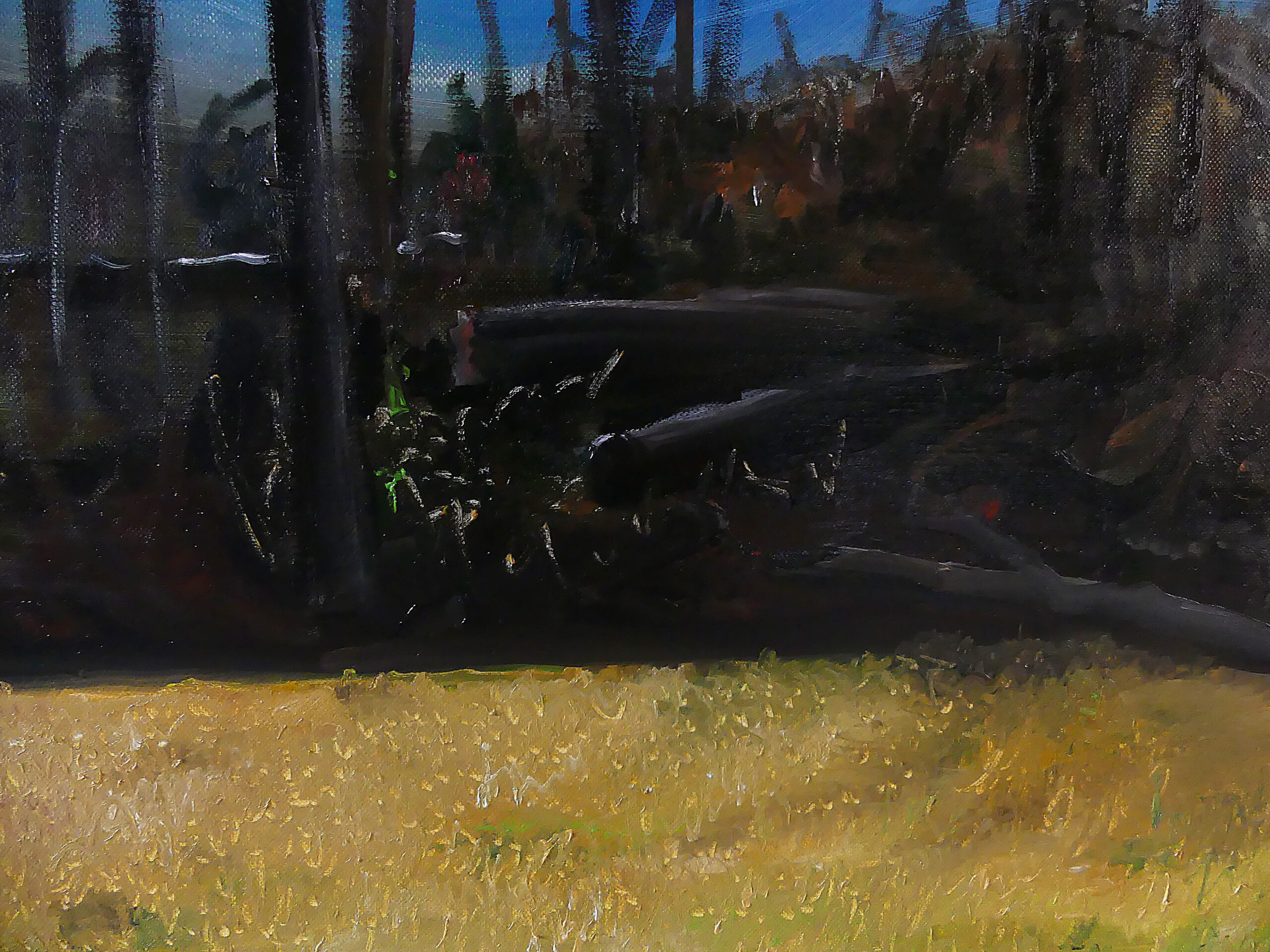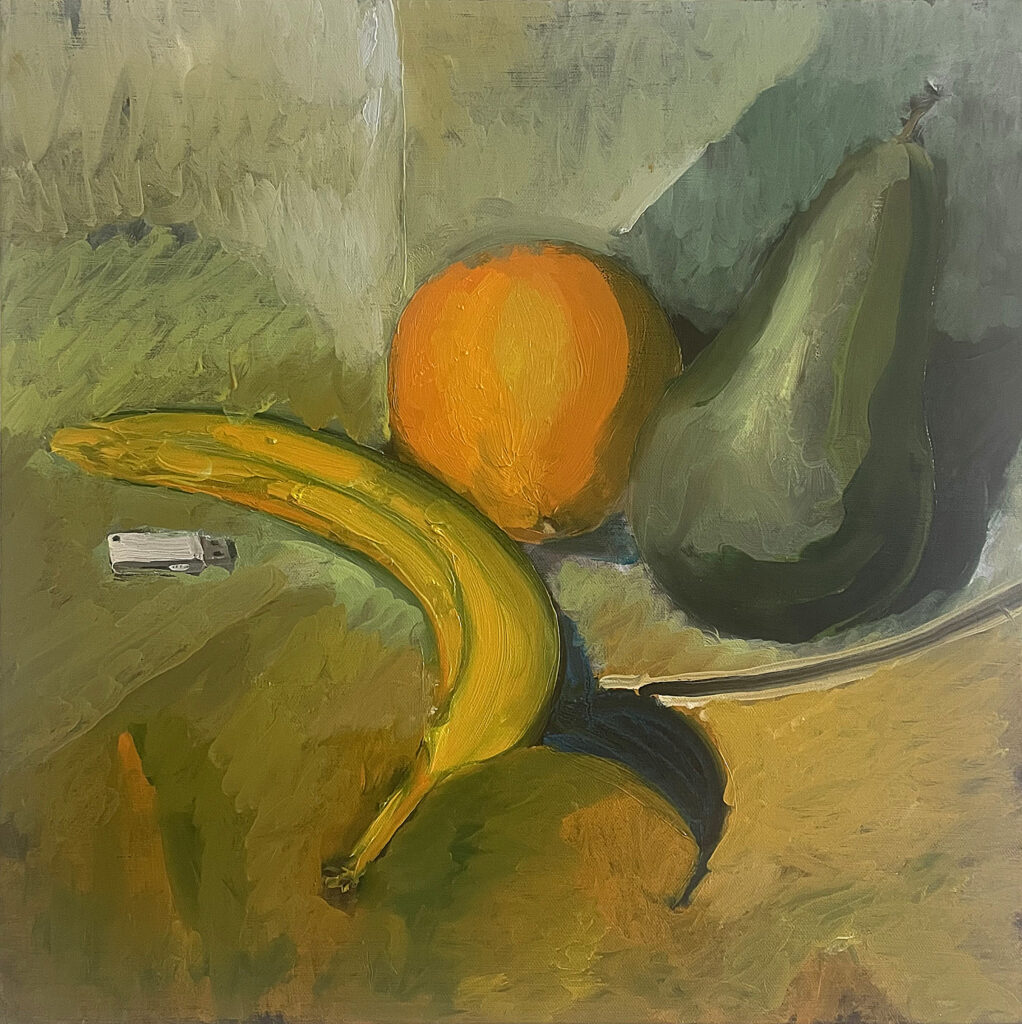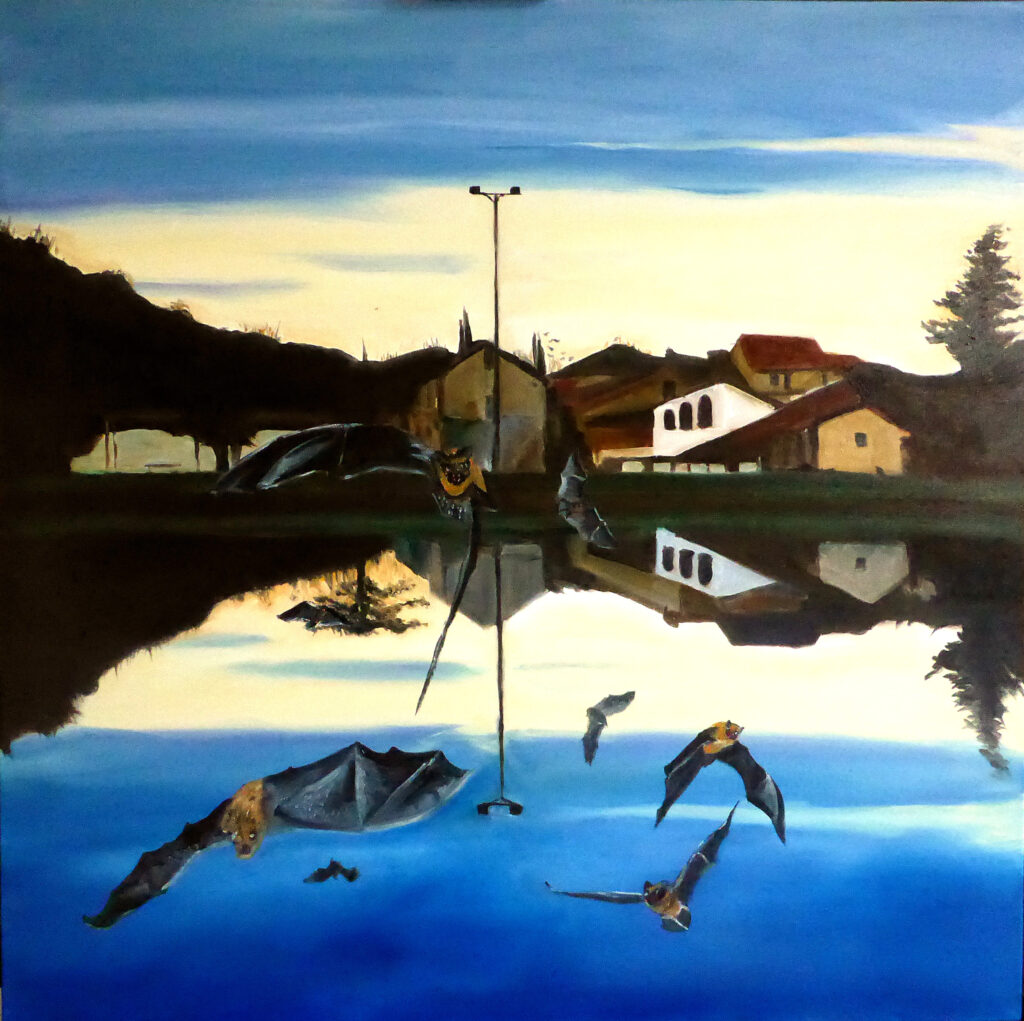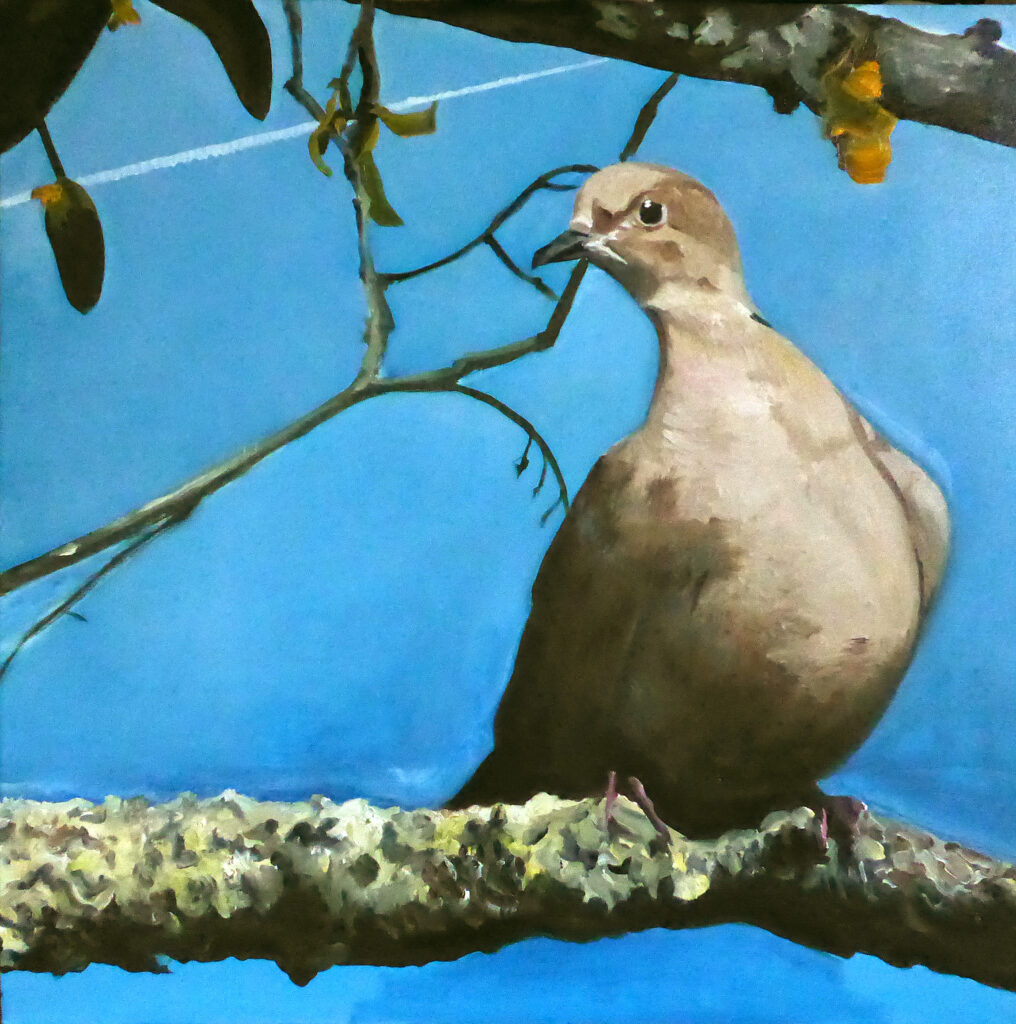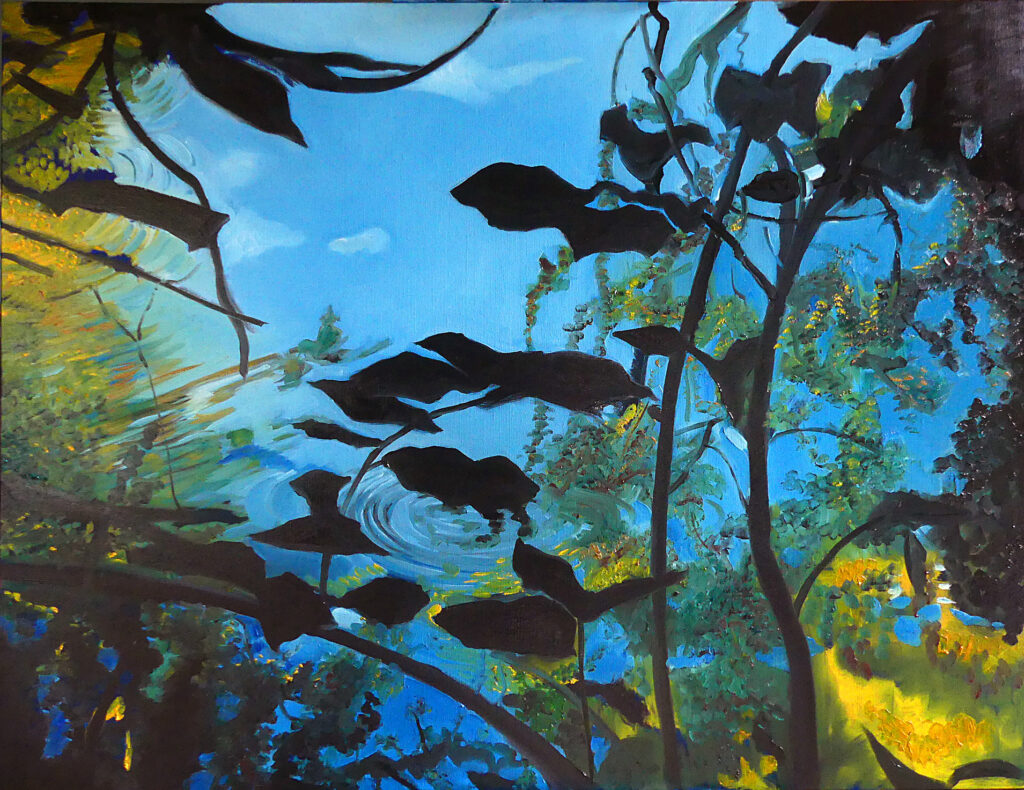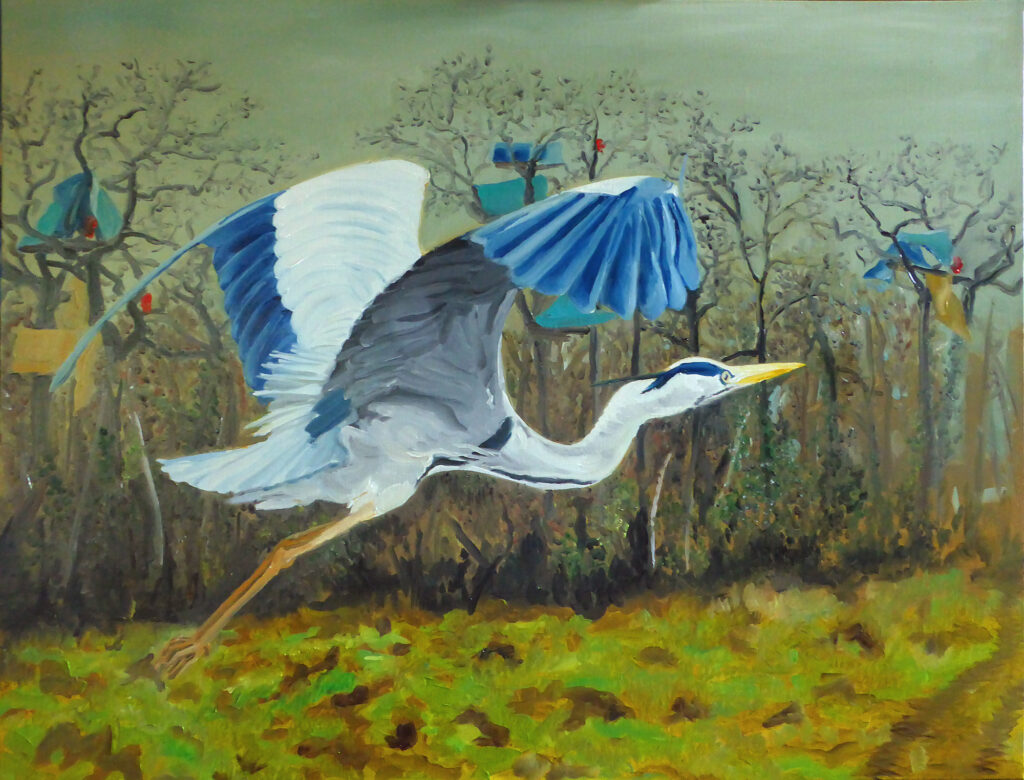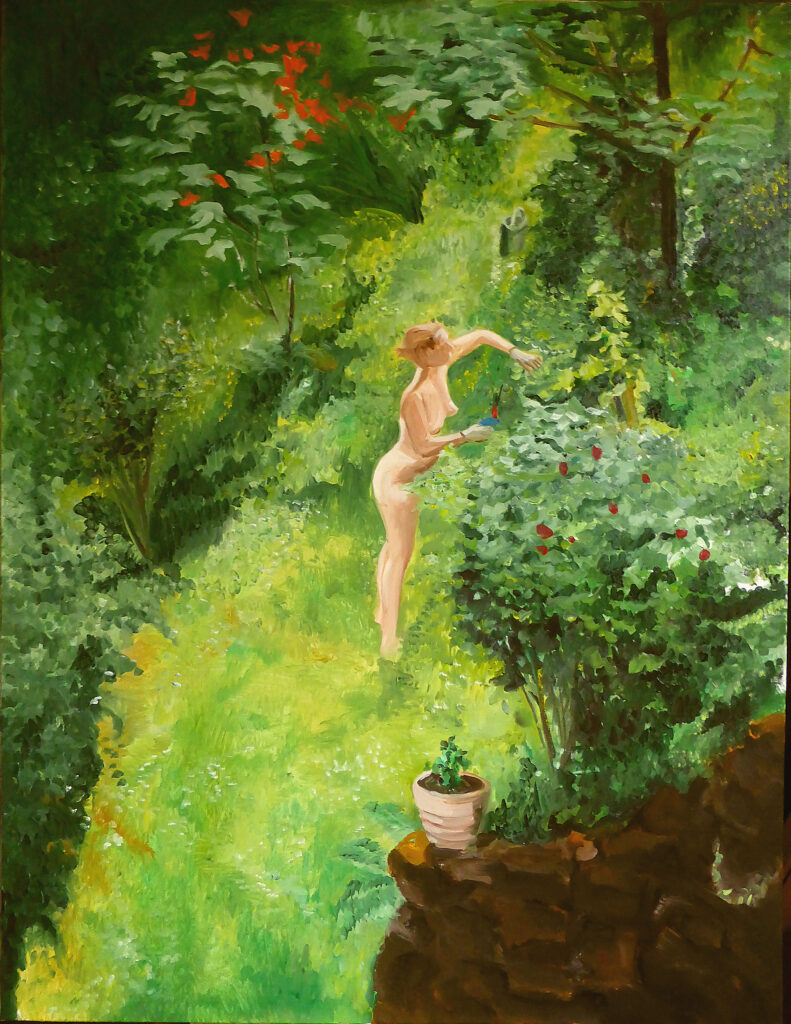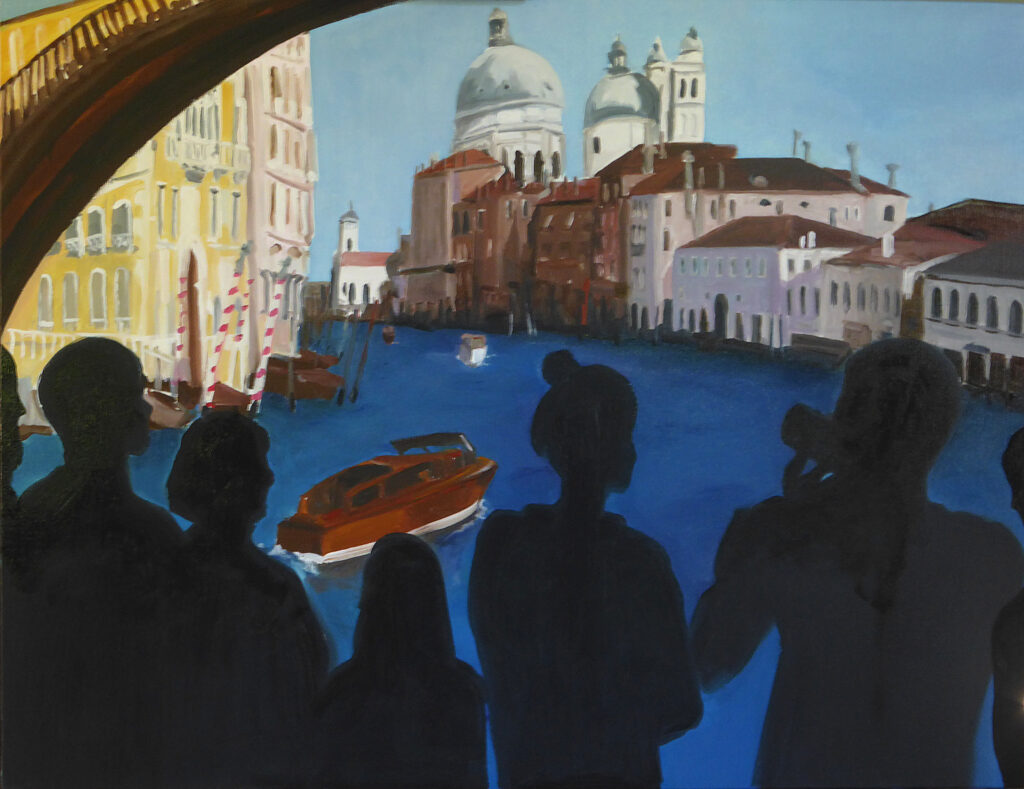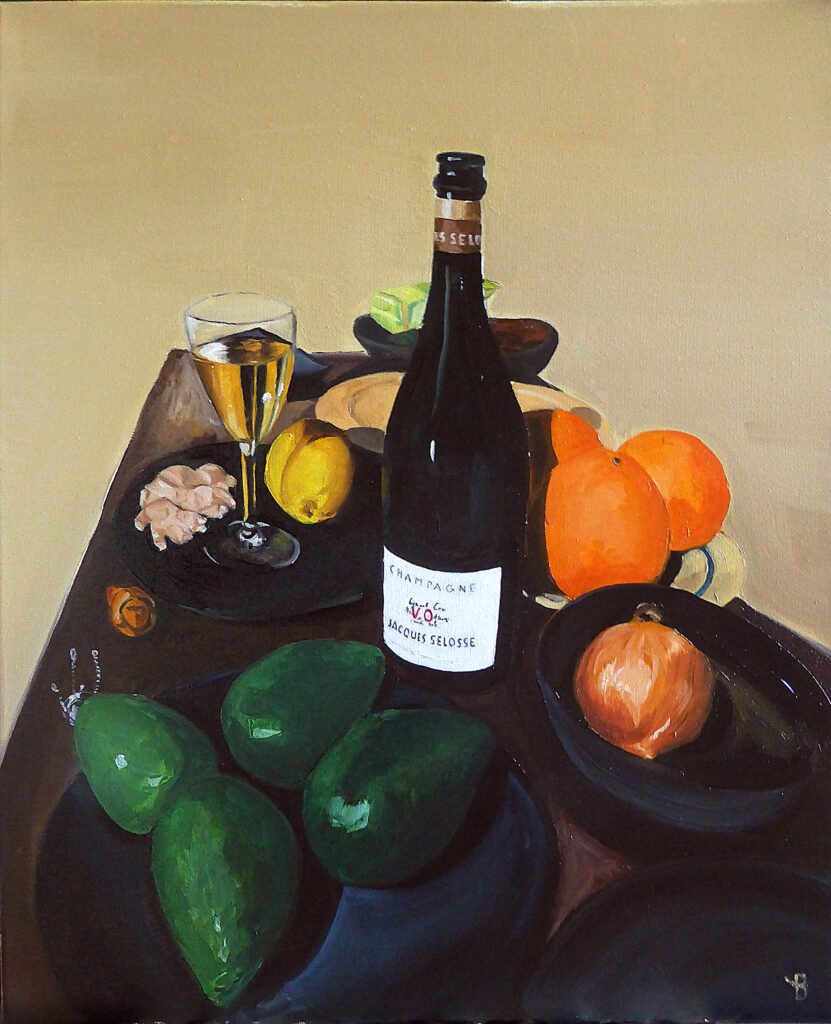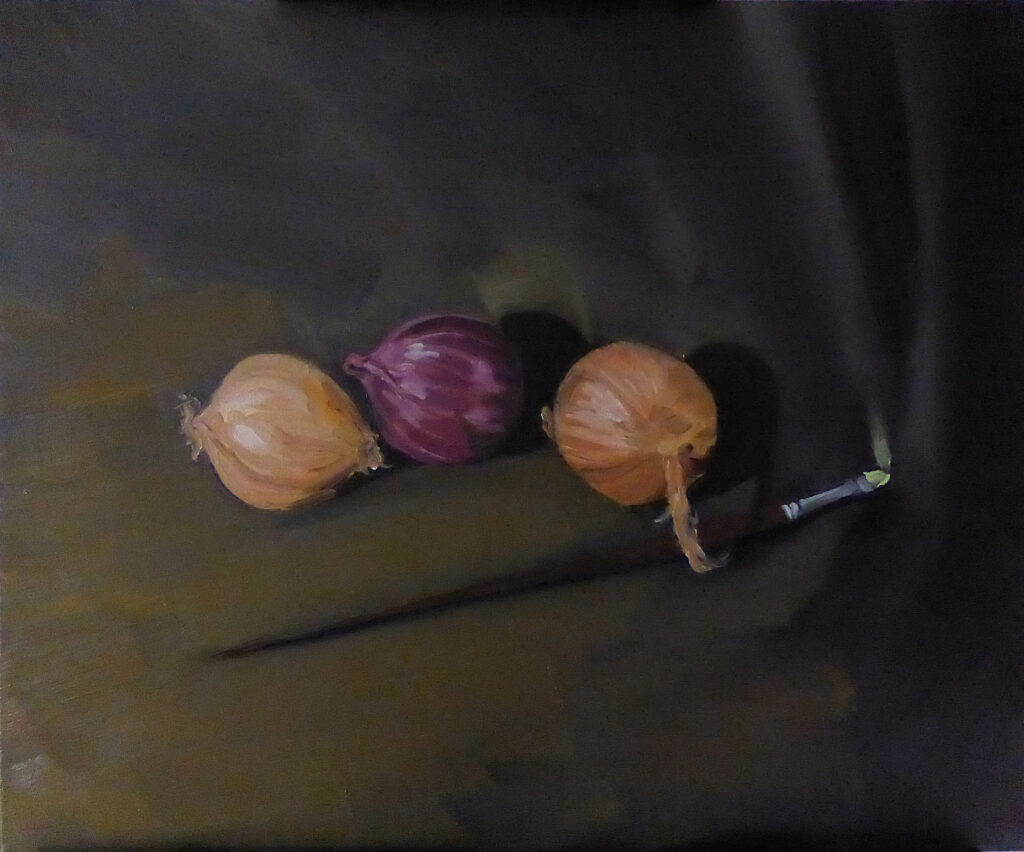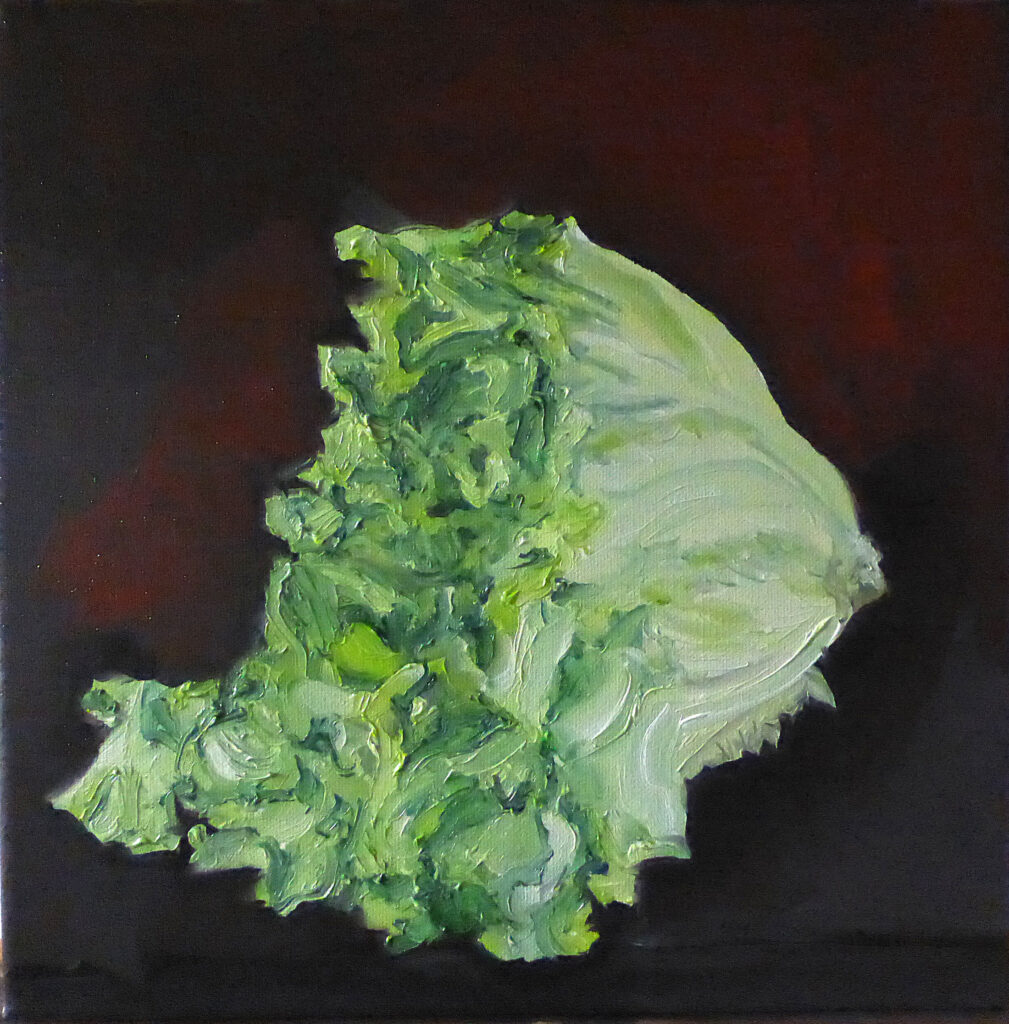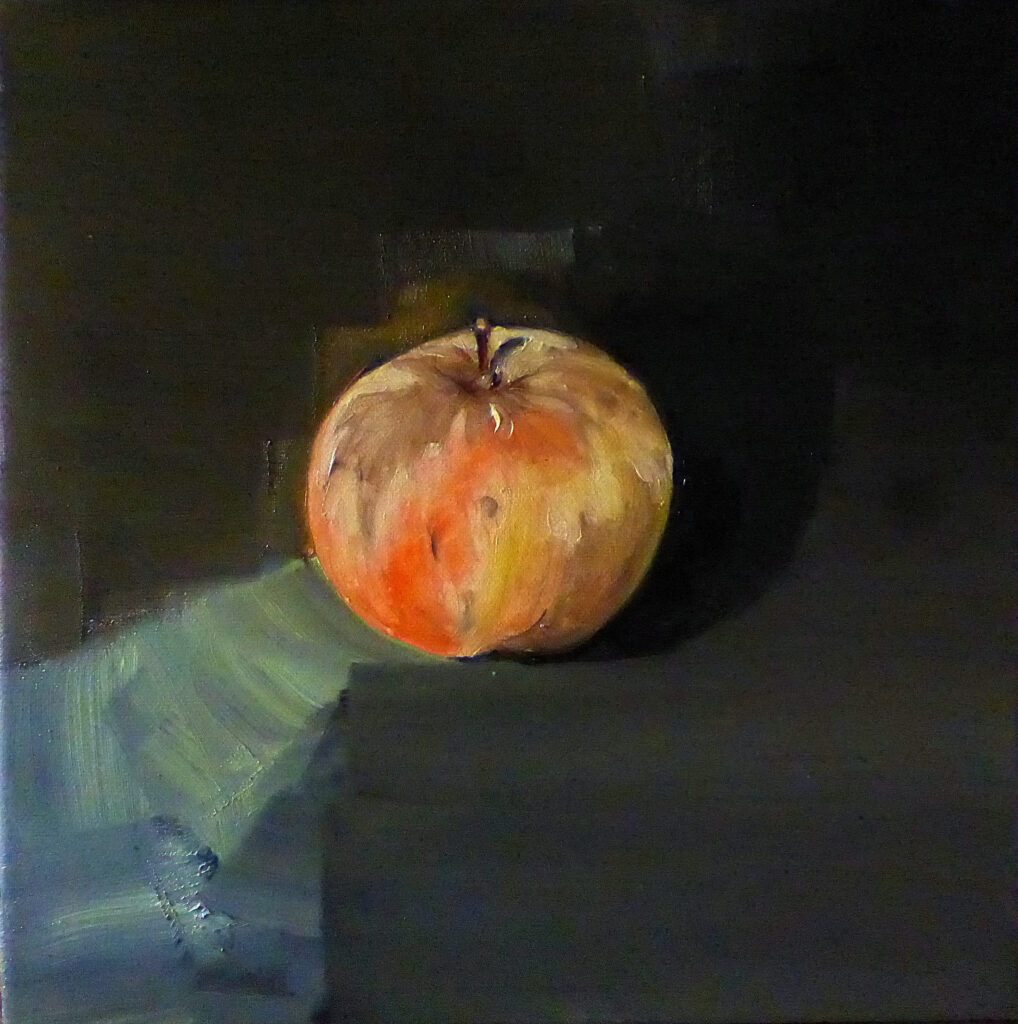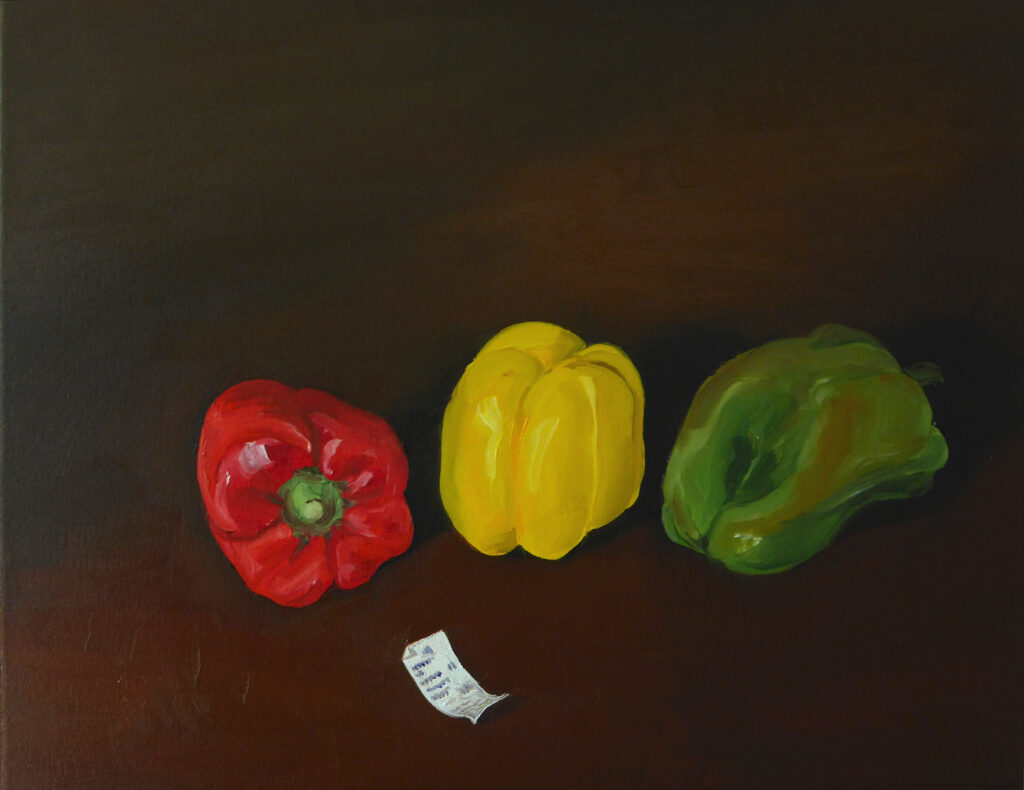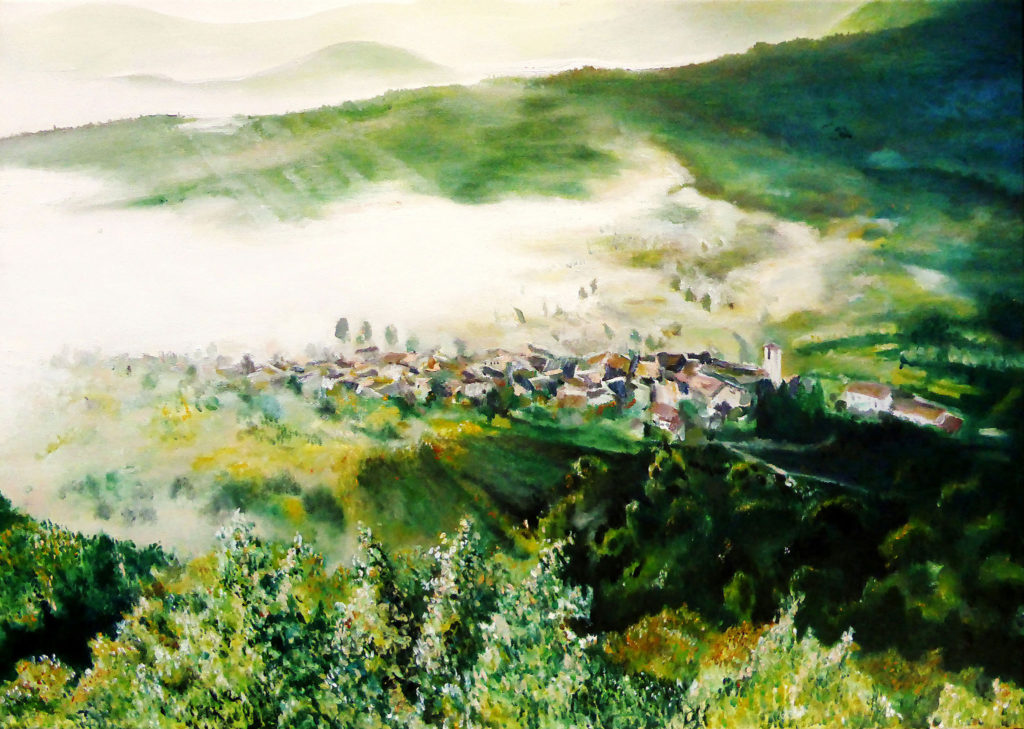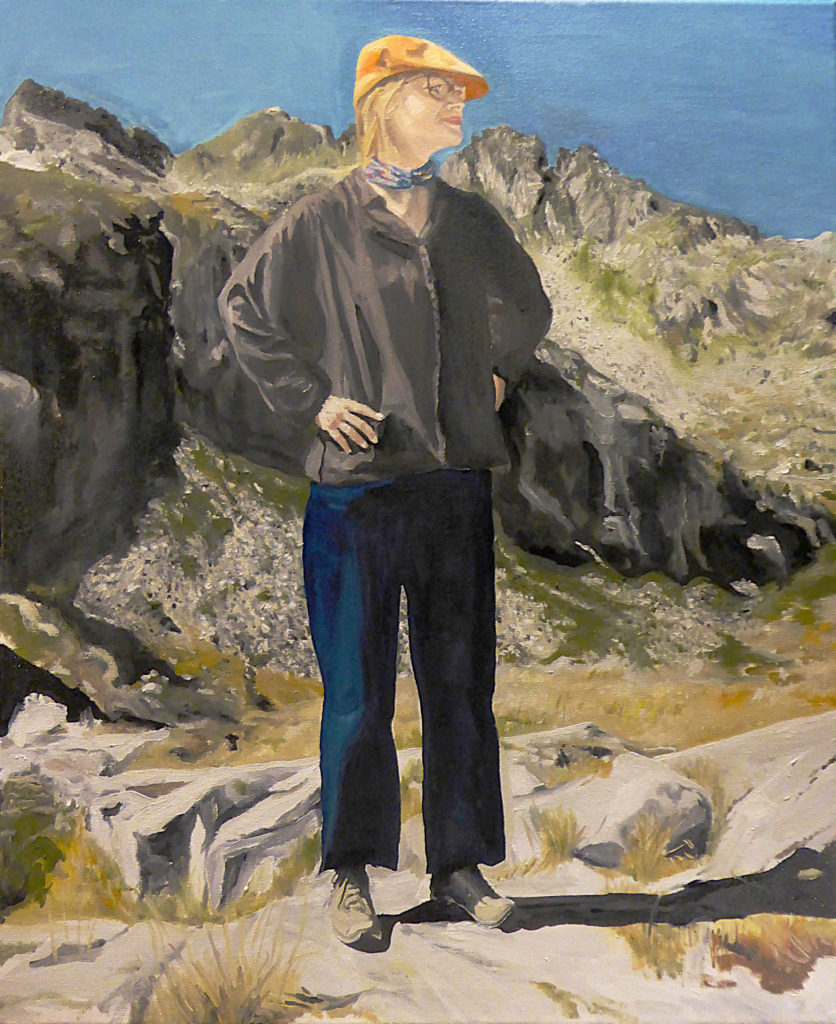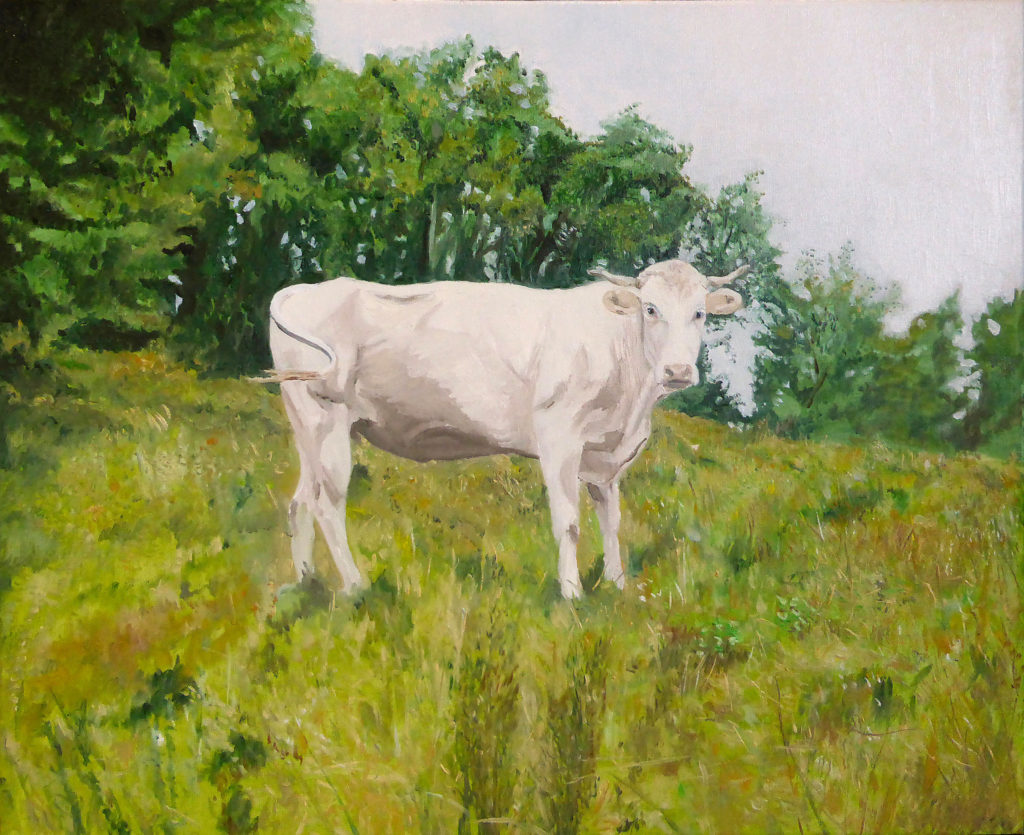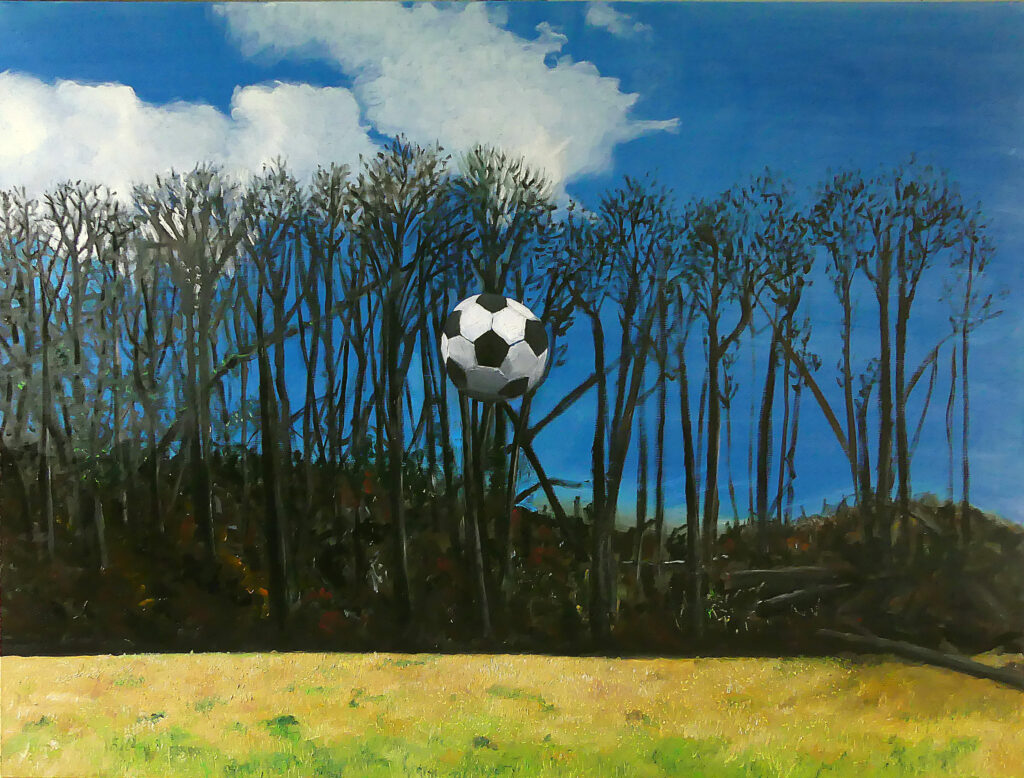
The Landscape
huile sur toile, 89x116cm
This painting raises the question of landscape. What is a landscape today? A tourist attraction? The visible part of the environment? A factor in land use planning? European philosophical history suggests that the inclusion of the garden as one of the fine arts by Kant reflects a transformation in the conception of the relationship between humans and nature. Jacques Rancière wrote “The Time of the Landscape” on this subject. Indeed, the awareness of the growing human footprint in the configuration of the landscape makes it the fruit of a history. Humans and nature are engaged together in and through the landscape. “The landscape is the observable expression through the senses on the surface of the Earth of the combination between nature, techniques, and human culture,” says landscaper Jean-Robert Pitte. The question then becomes one of the proportion or balance of this combination, as landscapes can now be urban or industrial. This combination is the specialty and the hot topic for professional landscapers. In painting, after dominating the Impressionist scene, the landscape has receded in favor of the expression and intervention of the artist, from Expressionism to Land Art… This painting indicates to me that my “Forests” are not landscapes.
